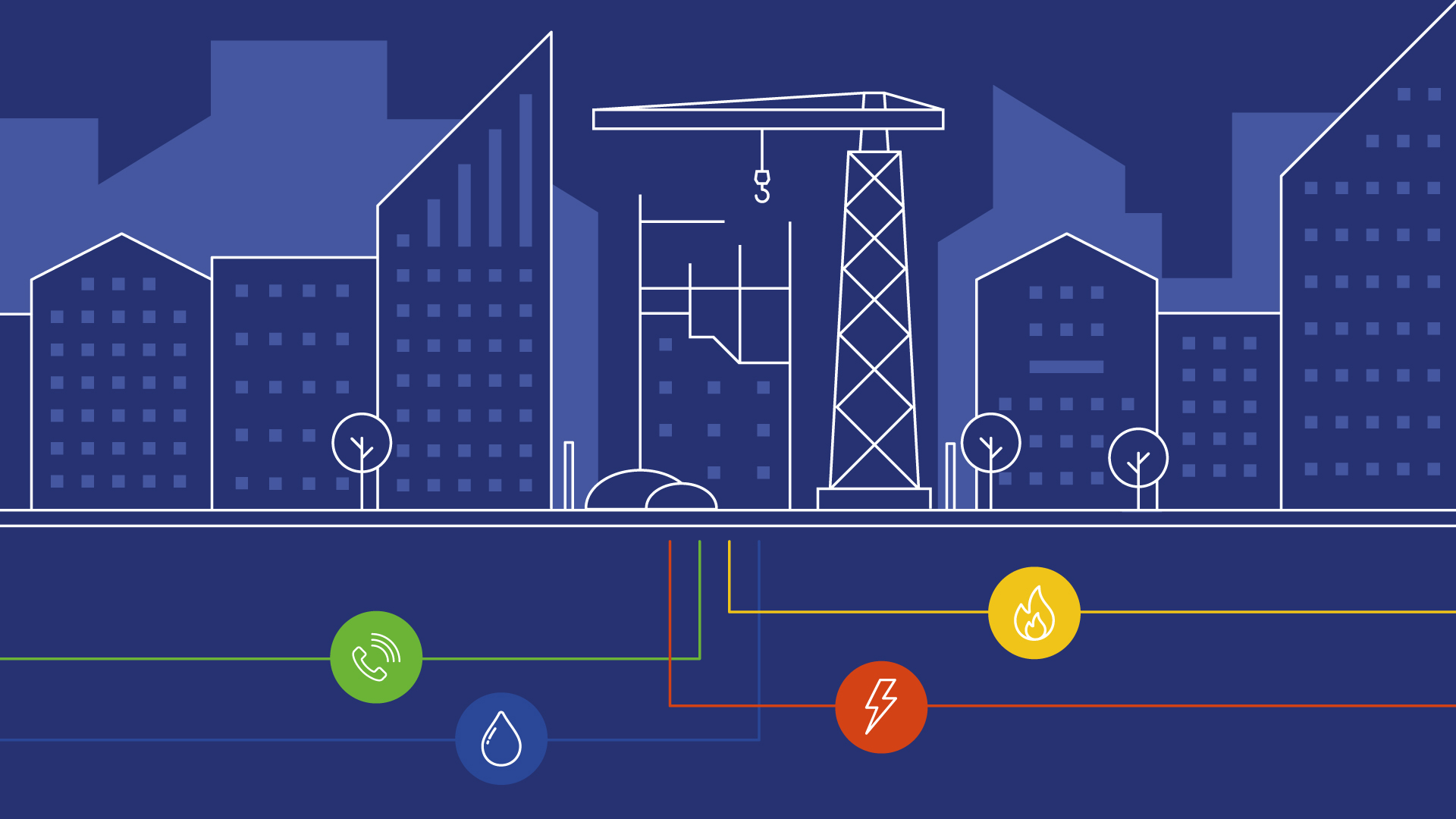
What is a Utility Search?
A Utility Search is an important part of the process to locate buried equipment on a work site by contacting the equipment owners and obtaining copies of their records. A Utility Search identifies underground network operators whose equipment may pose either a safety risk, for example an injury or fatality if damaged, or cost risk if equipment has to be relocated or protected to allow a project to continue.
With over 700 organisations owning and operating underground networks across the UK identifying the right companies to make enquiries to can be a time consuming and costly challenge. It is common to only search Incumbent Operators but this misses a large segment of the owner/operator market by ignoring the Independent Operators.
There are many Utility Search providers in the market so it’s important to choose the right one for you carefully. There are also two elements of costs that apply to a Utility Search, the Search Fee and Disbursements, when ordering a search make sure the total cost is transparent and agreed.
A best practice Utility Search will follow a process consisting of the following steps.
- Finding Affected Companies that own and operate underground equipment such as electricity, fibre, gas, sewerage, and water networks. Organisations operating underground tunnels, pipelines and transport systems should also be included.
- Contacting the Affected Companies to obtain copies of their underground asset records.
- Reviewing the records received to ensure they cover the correct search area and assess the proximity of any equipment to the work area.
- Collating the responses from the Affected Companies contacted, including any relevant safety advice, into a consolidated search report.
Any Utility Searches sourced ahead of physical works taking place must be PAS 128:2022 Quality Level D (QL-D) and HSG47 compliant to meet Safe Digging protocols.
The records provided by companies can hold a lot of technical information including the operating pressure or voltage, the construction material of the equipment, and the location of key items such as valves and chambers. Trying to interpret this information can be difficult for the layperson so its important Utility Searches are issued are in easy to interpret formats.
Utility Searches are generally available in a range of timescales, termed Turnaround Times, which can range from 24 hours to 20 days. As a rule of thumb, the quicker the response time requested the higher the Search Fee. One word of caution, equipment owners respond in a variety of timescales, this may mean any shorter timescale reports ordered may not be fully complete by the Turnaround Time deadline.
USEFUL UTILITY SEARCH JARGON
- Affected Company – an organisation with equipment in, or close to, your search area.
- Disbursement – a charge levied by a utility company for to provide their records.
- HSG47 – the Health and Safety Executive guidance on ‘Avoiding Danger from Underground Services’.
- Incumbent operators– a term often used to describe a utility company that operates in a regulatory defined licence area. So, their operations are restricted to a defined territory.
- Independent Operators – utility companies (often new market entrants) that aren’t restricted to defined territory and who may own and operate equipment in any location.
- PAS128:2022 – the BSI specification for Underground utility detection, verification and location.
- Search Area – the area of interest confirmed by the Client, this sets the extent of the search to be undertaken.
- Search Fee – the charge for a Utility Search company for conducting a search and issuing the responses.
- Turnaround Time – the timescale by which the responses are returned to the Client.

